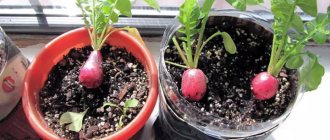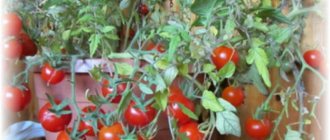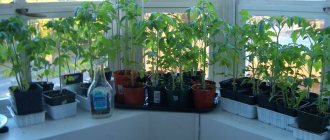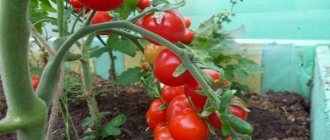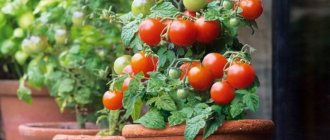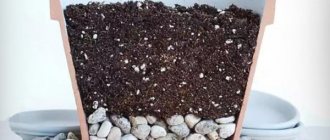Cilantro and coriander are one plant. The first name is taken from the Georgian language, the second is known in Europe. The difference is that coriander refers to the seeds and roots, and cilantro refers to the green leaves. Cilantro on the windowsill in your apartment is an excellent source of nutrients that you can use to replenish your body in winter. It grows well on the window and is easy to care for. The plant looks similar to parsley. Umbrella inflorescences. Flowers come in pink or white. The taste and smell of cilantro changes after it flowers. Ripe seeds have a strong smell and a sweetish-sharp taste. They and the green leaves are used as a seasoning.
The benefits of cilantro
It is because of its healing qualities that many people grow cilantro at home on their windowsill. When consuming the plant, the stomach, kidneys and intestines begin to work better. The green leaves, which exude a peculiar pleasant taste, contain many vitamins C, A, K, E and B, some micro- and macroelements, essential oils and acids.
If you include grass in your diet more often, your body will be more effective in cleansing itself of various toxins. It gets rid of parasites, strengthens blood vessels and the heart. Cilantro has antifungal, anti-inflammatory and wound healing properties. Its effectiveness in strengthening vision and immunity has been proven. With regular use of the plant, you can ensure that your blood sugar levels decrease.
Attention! Before including the herb in the diet, diabetics and hypertensive patients should consult a doctor.
Cilantro is often included in various diets that are recommended for people who want to lose weight. Growing coriander on a windowsill all year round is not difficult; you just need to sow the seeds correctly, prepare the soil and place the pot in a suitable place.
Sowing rules
Sowing is simple and does not require special skills. The main thing is to follow several rules of agricultural technology so that the plant feels as comfortable as possible and produces a good harvest.
- The notches are created by at least 2 centimeters, the interval between them is 6 centimeters.
- Seeds are sown several at a time, covered with soil on top, and watered with a syringe.
- Cover the container with film or a bag so that the seeds germinate faster.
- They are removed until the first shoots in a warm corner of the apartment, then the film is removed.
At home, cilantro is sown sparsely so that the plants have space between each other. You can remove it to the windowsill when sprouts appear. In 3 weeks there will be the first harvest. If, of course, all the rules were followed, the care was appropriate.
Harm of coriander
Almost everyone can eat this spicy herb; there are no contraindications. It can only cause harm if used unrestrictedly. Due to excessive use, the surface of the skin may turn red, sometimes rashes and swelling may appear on it. In some cases, the person will feel sick. All these signs indicate the occurrence of an allergic reaction to the product being consumed.
In addition to allergic manifestations, abuse leads to:
- insomnia appears;
- memory deteriorates;
- menstruation is disrupted;
- bleeding increases;
- the blood becomes thicker;
- blood clots form.
Varieties of cilantro for growing on a windowsill
There are varieties that, when grown indoors, grow and develop very well, producing lush greens and tasty seeds. One of the recommended ones is “Stimulus”. It has compact bushes, they grow about 30 cm, the leaves are dark green. Ripening occurs after 2 months. The cilantro herb "Oriental Aroma" reaches a height of 60 cm. It has many light green leaves. It has a peculiar spicy aroma. The ripening period is just over a month. Bushes of the Avangard variety delight with a rich amount of green leaves. This plant variety is very disease resistant. It has a strong and persistent odor.
Coriander "Yantar" does not grow very spreading. The leaves are colored bright green. They ripen after 1.5 months. Bushes of the "Santo" variety reach a height of 60 cm. The green mass is of medium size. Ripening occurs after 50 days. You can collect a lot of greens from the unpretentious variety “King of the Market”. It ripens quickly; it takes a little more than a month to pick the delicious herb. The Alekseevsky variety is very resistant to low temperatures. Grow cilantro at home in winter, even if the room is not too warm. The Alekseevsky variety has upright compact bushes. It takes approximately 35 days to mature.
Growing and care
Herbs in an apartment develop more slowly than in open soil. But, if you follow the rules of care, they will grow well and the harvest will be good. The overwhelming majority of aromatic plants are not fussy to care for and do not have any special requirements for living conditions. The main thing is to choose the right container for growing, select a suitable substrate and provide the plants with the microclimate they need.
Bright and aromatic: green adjika with nuts Bright colors, rich taste, spicy aroma - it is for these qualities that Caucasian adjika is loved all over the world. Her…
Before planting, it is advisable to check the seeds for quality - pour them into water. Those that do not float are suitable for germination. Such vegetation should be planted immediately with seeds in the soil mixture. There is no need to deepen them, just sprinkle them with a little soil. Until the seedlings emerge, keep the seedling container covered with glass or covered with transparent polyethylene (to create a greenhouse effect). The first seedlings will germinate in 7-10 days.
The basic requirements for caring for herbs are:
- pot - ceramic or plastic, wide, shallow, with drainage;
- substrate - better than purchased universal soil, with sand or perlite;
- placement - window sill facing south or east;
- illumination – daylight hours for aromatic herbs should be at least 6-8 hours;
- temperature range is about +18...+20˚ C, at night it is recommended to reduce it to +15˚ C;
- humidity – it is desirable that the room has higher values, 70-80%;
- watering – abundantly, immediately after the top layer of the substrate has slightly dried;
- spraying - if the air in the room is dry, the procedure is needed regularly;
- fertilizing - during the first 2 months with liquid mineral fertilizers (2-3 g per 1 liter of water).
On a western or northern windowsill, plants will be able to develop and grow (except for rosemary, basil, tarragon and other very light-loving species), but extremely slowly. Therefore, in case of insufficient illumination, it is recommended to illuminate the fragrant bed on the windowsill with a phyto-lamp.
When it is impossible to lower the temperature in the room, ventilation is done. But, fragrant plants must be protected from drafts. You should also avoid fertilizing with nitrogen fertilizers, as they reduce the content of aromatic substances and essential oils in plants. If there is an excess of nitrogen in the soil, the benefits of consuming such herbs disappear, as their nitrate content increases.
Attention!
For greenery to grow as a lush bush, the container with the plant must be rotated daily so that the spice is on the other side facing the sun.
It is possible to grow spices on a windowsill in an apartment - such aromatic plants are not capricious and rarely require special attention. But it is advisable to follow agricultural techniques, since otherwise the spicy plants will develop extremely slowly, and some species may die due to unsuitable conditions. Such a vegetable garden with spicy aromatic plants on the windowsill at home is not only original, but also useful, the main thing is not to turn the apartment into a greenhouse.
Stages of growing from seeds
Anyone can grow cilantro on their windowsill at home. Before this, you need to prepare all the necessary equipment. The first step is to buy seeds. Be sure to look at the deadline. A novice gardener may not know that the longer coriander seeds are stored, the worse they germinate. It is advisable to take those that were collected last year or stored for no more than 2 years. The choice of location is considered a significant stage of cultivation. The homeland of coriander is the warm Mediterranean, so it needs to choose a sunny place, only then the leaves will be a rich green color. Then choose a pot and prepare the soil. Land can be bought or collected from the garden. After this, the seeds are sown, grown and carefully cared for: watered and fed with mineral fertilizers.
Preparing seeds for planting
The seedless method is most often used; it is the simplest. Gives more yield, the plant does not need to get used to the new soil. Growing from seeds on a windowsill can produce quite a lot of greenery.
Box with greenery on the window
- As always, in such cases, the seeds are soaked in water for 3-4 hours, and those that float are removed. These seeds are empty, will not sprout, and it will not be possible to grow a large garden on a windowsill. Soaking is also necessary to swell the shell so that it germinates better.
- The necessary ones are planted in a container. At the bottom there is drainage material, then moistened soil. The depth of planting seeds is 1 cm. Leave 4 cm from the edge of the container, grooves at a distance of 6 cm.
- The seeds are covered with peat on top, which must be sifted so that a crust does not form on top of the soil.
- Seeds require a lot of moisture, so to prevent it from evaporating, the container is covered with film on top.
Selecting a location
It is best to plant cilantro from seeds in a pot on the windowsill of windows facing east or south. If there are none, then you will have to provide additional lighting. Otherwise, the plants will stretch out, be weak, and lush green mass will not grow. Lamps are sold in special stores; they have various very convenient mounts. As an additional light source, you can purchase fluorescent lamps that provide good lighting. They heat evenly and not too much, so delicate plants feel great around them. As a last resort, you can buy aquarium ones, although experienced gardeners do not recommend installing them. Fluorescent lamps emit a lot of blue tint when working, so they are recommended to be combined with incandescent lamps. The latter must be combined with luminescent ones.
How to care for cilantro in winter
In winter, the days become shorter and colder weather sets in, and this affects the growth of crops. In order for cilantro to produce lush greens and grow actively, I:
- I install additional lighting;
- I maintain the desired temperature;
- I provide optimal humidity in the room;
- I water the cilantro 2-3 times a week;
- I don’t allow drafts.
Compliance with all points increases productivity.
In addition to cilantro, I grow other greens. To broaden your horizons, I recommend reading how to store onions at home all winter. If all conditions are met, the onion will last until spring and will not germinate.
Plant care
You may be interested in: Varieties of coriander with name and description Features of growing and caring for the Yantar cilantro variety Description of the Caribe coriander variety: features of growing and care
When caring for sown cilantro, it is necessary to water, thin out and fertilize it on time. The plant prefers generous watering, but the water in the pot should not stagnate. Otherwise, the earth will begin to mold and microbes will appear in it. As a result, the roots will rot and the bush will die. Therefore, the water that collects in the pan is drained. Water with settled water at room temperature. It is recommended to systematically spray the green mass in the same way, pouring it into a spray bottle. We must ensure that the soil does not dry out. When the plant begins to actively grow, the amount of watering is increased; in winter, on the contrary, it is reduced. As soon as the sprouts become strong, the first rosettes form, the bushes are fertilized. Coriander responds well to mineral fertilizers. They are applied no more than 4 times a month.
Coriander only tolerates one cut. When there is no need for a large amount of greenery, they are cut off gradually. After the whole thing is cut off, the root is pulled out. Renew a third of the soil and add ash. The soil must be spilled with a warm 1% solution of potassium permanganate. After this, you can sow the coriander seeds again.
Answers to pressing questions
Question No. 1.
I sowed the seeds in low containers, now there is not enough space for the plants. Can they be transplanted into other containers at the 2-leaf stage?
Annual herbs do not tolerate transplantation well. But, of course, you can try to carefully transplant them to a new place, having first watered the soil abundantly and being careful not to damage the roots and stems.
Question No. 2.
When and how to properly cut off emerging greenery?
Do not cut off the very first branches and leaves - the plant needs them for photosynthesis. Greens should be collected when the rosette has formed, but do not cut it off to the very root, but leave a few centimeters under the lower leaves. It will grow back after some time. "
Question No. 3.
What material is suitable for drainage?
To ensure that the moisture in the container with greens does not stagnate and the roots do not rot, great attention is paid to drainage. For this purpose, expanded clay, fragments of shards or bricks, and fine gravel are used. They should first be washed and doused with boiling water to disinfect.
The use of synthetic padding polyester as drainage is interesting; it perfectly collects excess moisture.
They should first be washed and doused with boiling water to disinfect. It is interesting to use padding polyester as drainage; it perfectly collects excess moisture.
Question No. 4.
Why are flower stalks removed from a plant?
So that it does not direct all its energy to flowering, since this sharply reduces the growth of green mass and its quality, the leaves develop an unpleasant odor, and the plant quickly ages.
Question No. 5.
Is it possible to plant cilantro together with parsley or dill in the same container?
It is better to avoid any joint plantings, since cilantro does not tolerate the presence of neighbors.
Diseases and pests
Cilantro, which grows at home, is more resistant to various diseases and insect pests. But if you care for it incorrectly, then this cannot be avoided. One of the serious diseases of a fungal nature is ramulariasis. With it, the leaves become covered with brown rusty spots. This happens if the air in the room is too humid. If a whitish coating appears on the stems and leaves, which later becomes dense, it means that the plant has contracted powdery mildew. The disease is promoted by the presence of warm and dry air. This can happen if the plant is often and generously fertilized with nitrogenous fertilizers. The appearance of red-colored bubbles on the green mass indicates that the cilantro has been damaged by rust. The blisters contain fungal spores.
Due to its characteristic smell, the plant rarely suffers from parasites, although for some it is not a problem. Wireworms, seed beetles, striped bugs, or fall armyworm caterpillars can settle on cilantro grown indoors. All these pests are brought to plants growing indoors with soil that is not treated.
Harvesting and storage
You can serve the first fresh greens to the table 21-30 days after the seeds sprout. Leaves must be picked carefully so as not to break the plant. When flower stalks appear, the green mass becomes rough, not so juicy and tender. During this period of time she smells like bedbugs. If the task is not to collect seeds, it is better to pinch the flower stalks in a timely manner. Housewives do not recommend drying cilantro; they believe that this loses its unique taste and smell. It is better to dry the seeds, then grind them, and use the resulting powder. It is added at the final stage of cooking.
The root is used in making pickles and marinades. When grass is frozen, both its color and all its beneficial qualities are preserved. First, the cilantro is sorted out, washed thoroughly under running water, and placed to dry. Green branches can be cut, put in a bag, and then frozen, or put in the freezer whole. They can be stored for up to 1 year, but after defrosting the taste becomes slightly different.
Experienced people advise not to grow cilantro in the same pot with other plants. In order to get a rich harvest of this spicy herb, you just need to carefully care for it, especially since it is unpretentious and caring for it will not take much time.
Watering, fertilizing, care
Growing coriander from seeds on a windowsill is not difficult. The culture grows and develops well at temperatures of +17–250C, but easily tolerates cooling to +6–100C. Cilantro standing on a windowsill will not be damaged by ventilation, but it must be protected from constant drafts.
When caring for coriander, follow a number of rules:
- maintain moderate soil moisture without stagnation of liquid;
- water the plants regularly with small portions of settled or filtered water, remove excess water from the pan;
- moisten fresh greens from a sprayer when the air in the apartment is dry (in hot weather, during the heating season);
- the day after watering, the soil is carefully loosened to allow oxygen to enter, so as not to damage the root system;
- during periods of intensive growth, increase moisture content, and reduce it in winter;
- after the formation of the first rosettes, the strengthened seedlings are fed with mineral complex fertilizers;
- To preserve the juiciness of the leaves and increase the greenery, the emerging flower stalks are pinched off.
When the soil dries out or there is too much light, cilantro is prone to bolting. Excessive moisture leads to soil damage by pathogenic bacteria, mold, and rotting of the root system. To maintain an optimal microclimate and air circulation, the apartment is ventilated daily.

